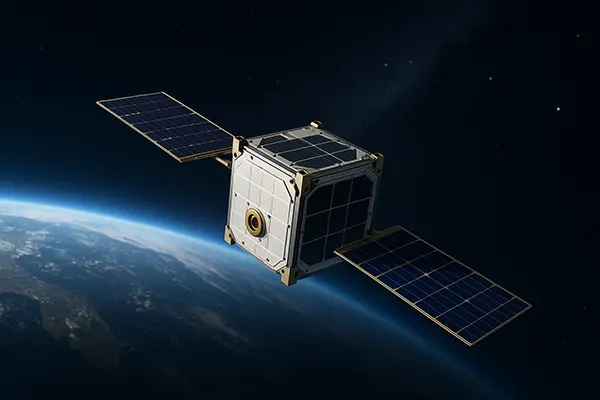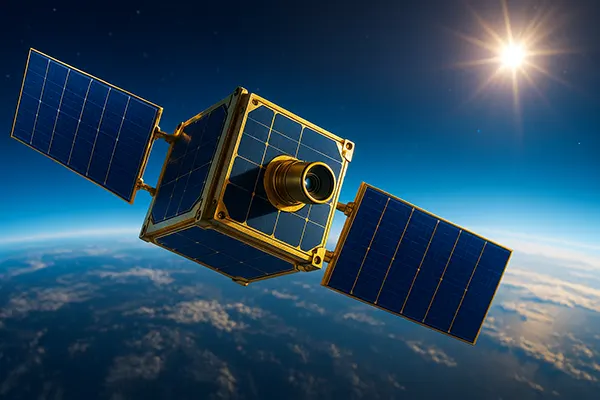
Nanosatellites and the Private Space Race: A Renaissance for Small Business
Nanosatellites have revolutionised the space sector, unlocking opportunities once reserved for government agencies and billion-dollar enterprises. Today, small businesses are entering orbit — both metaphorically and literally — thanks to decreasing costs, innovative platforms, and new regulatory pathways. This article explores the current state of nanosatellite technology, the rise of private space initiatives, and the pivotal role small businesses now play in this high-stakes frontier.
The Age of Accessible Space
In February 2025, the market for nanosatellites — spacecraft weighing under 10kg — continues to surge. Their affordability and adaptability make them perfect tools for Earth observation, communications, and data collection. SpaceX’s dedicated rideshare missions and other launch providers like Rocket Lab and ISAR Aerospace have drastically reduced the cost per kilogram to orbit, making space more accessible than ever before.
Public-private partnerships have also increased. For instance, the European Space Agency’s “Business in Space Growth Network” actively supports SMEs in developing satellite technologies. Moreover, miniaturisation of hardware and open-source software have allowed startups to design, test, and even launch their own nanosatellites with minimal capital investment.
Beyond launches, downstream services such as data analytics, satellite imagery processing, and AI-powered geospatial platforms are emerging as fertile ground for innovation. These developments are drawing interest from venture capitalists, pushing the valuation of many nanosatellite startups into multi-million-euro territory.
Key Technological Breakthroughs
The evolution of CubeSat standards — a modular satellite framework — has played a crucial role. Developers can now use 1U to 12U units for various payloads, ranging from scientific instruments to encrypted communication systems. This flexibility ensures that even non-aerospace companies can participate in orbital operations.
Propulsion systems, once a bottleneck, have also improved significantly. Electric propulsion, green propellants, and reaction wheels enable greater control, orbital manoeuvring, and even deorbiting, crucial for sustainable space operations. These advancements have empowered SMEs to offer solutions once limited to large aerospace primes.
Communication tech has followed suit. In 2025, inter-satellite links and adaptive antennas allow nanosatellites to communicate across fleets or directly with ground stations in real time. Such capabilities unlock services like remote sensing for agriculture, precision maritime tracking, and environmental monitoring.
Rise of Private Space Infrastructure
The privatisation of orbital infrastructure is no longer a concept but a tangible economic shift. Companies like Astroscale are addressing debris mitigation, while others like Momentus and Exotrail focus on last-mile space logistics, ensuring that nanosatellites reach optimal orbits. These services are tailored for the needs and budgets of small enterprises.
In February 2025, the US and EU regulatory bodies continue simplifying licensing for commercial spaceflight. The UK’s Civil Aviation Authority, for example, operates a streamlined process for nanosatellite operators, contributing to a spike in new missions from small firms and universities.
Orbital hosting — the leasing of space on larger satellites — has also emerged as a key business model. This approach removes launch constraints and allows businesses to focus on service delivery, bypassing many traditional space-entry barriers.
Democratising Data in Real Time
Nanosatellites are a gateway to real-time data, enabling SMEs to offer services ranging from urban planning to wildlife tracking. For example, Finnish company ICEYE uses synthetic aperture radar (SAR) to provide rapid disaster imaging, assisting governments and NGOs worldwide.
Environmental startups are using nanosatellites to monitor pollution, deforestation, and water usage with high temporal resolution. These capabilities are particularly valuable in remote regions or politically unstable areas where ground-based monitoring is infeasible.
Furthermore, the fusion of satellite data with AI and cloud platforms allows small enterprises to generate scalable, high-value insights for sectors like logistics, insurance, and energy — often at subscription-based pricing tiers suitable for SMEs.

Challenges and the Road Ahead
Despite the promising horizon, challenges remain. Space debris is increasing, and collision risk is a genuine concern for nanosatellite constellations. Regulatory bodies are under pressure to mandate deorbit mechanisms and enforce debris avoidance protocols.
Funding is another hurdle. While venture capital is growing, many early-stage businesses struggle with long hardware development cycles and return-on-investment timelines. Governments and agencies must continue supporting grant schemes and accelerators tailored for the space sector.
Technical reliability is also essential. Low-cost components can result in higher failure rates, threatening the viability of some missions. As a result, more companies are turning to radiation-hardened electronics and rigorous pre-launch simulations.
Future of the Orbital Economy
By 2030, analysts project that the global nanosatellite market will surpass €20 billion. The orbital economy is poised to support a vast array of businesses — from global connectivity services to climate mitigation systems — that benefit directly from space-based infrastructure.
Initiatives like the EU’s IRIS² and NASA’s SmallSat programs continue to incubate innovation and provide flight opportunities for new entrants. These public efforts, alongside private funding, ensure that nanosatellites remain at the core of a sustainable and inclusive space industry.
Ultimately, the success of small businesses in space is not just a technological triumph but a signal that the final frontier is no longer exclusive. With the right mix of innovation, policy, and market support, SMEs will continue driving this orbital renaissance.





